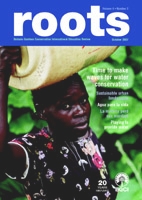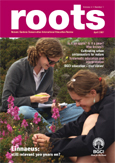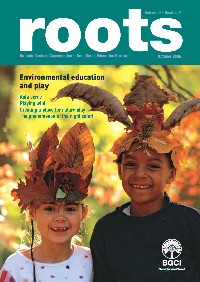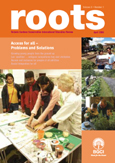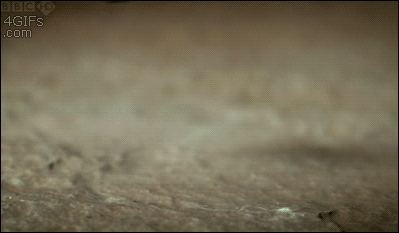Trawling the Facebook page of Botanic Gardens Conservation International today lead me to their website where I was glad to see the Journal they produce is easily accessed online. Its actually a gold-mine of resources for anyone interested in how the role of Botanic gardens is changing and expanding and connecting with all-important contemporary themes around Climate, Sustainability and Biodiversity preservation etc to name just a few.
See the list of journals here:
Roots: Issues 3.1 - date
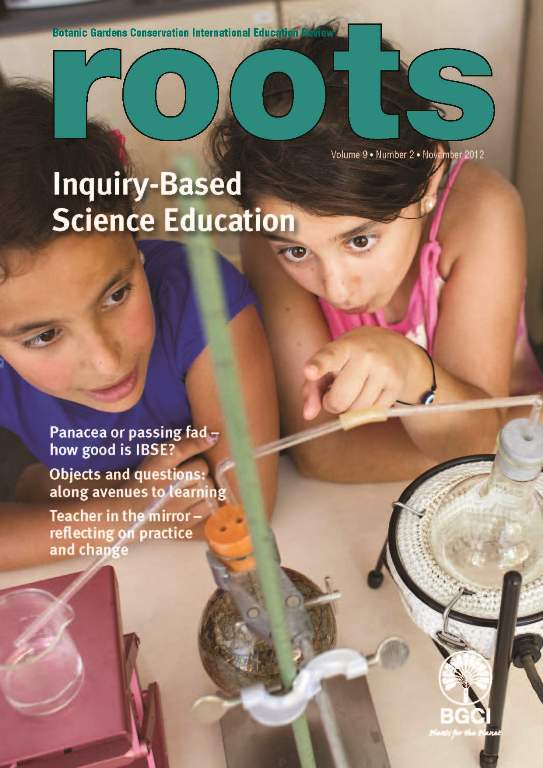 | Roots 9:2 - IBSEThere’s nothing new about inquiry-based learning; its theoretical ancestry can be traced, for example, to the work on open learning by Dewey and Wagenschein from the first half of the last century. And were we to scroll back a couple of millennia, we’d probably find that the idea of encouraging students towards questioning self-knowledge would earn a nod of recognition from Socrates himself! In this edition of Roots we have invited authors from Europe and Asia to guide us across the current ISBE landscape |
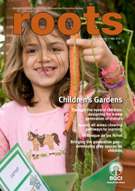 | Roots 9:1 - Children's GardensIt’s a challenge facing botanic gardens everywhere: how can they broaden their visitor demographics and develop more meaningful relationships with their host communities? One approach, adopted by gardens worldwide, has been to shift the emphasis towards children and families – and in this latest issue of Roots we explore how some of them are addressing these existential questions of demographic and community relevance. |
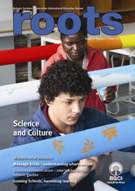 | Roots 8:2 - Science and CultureLocated at the crossroads of science and culture, botanic gardens occupy a key educational and societal role. With human activity leading to environmental degradation and an unsustainable future, varied and imaginative strategies are needed for gardens to challenge these destructive behaviours and offer attractive, alternative models of sustainable living. Roots 8:2 demonstrates that there is no shortage of ideas, with examples from across the globe. |
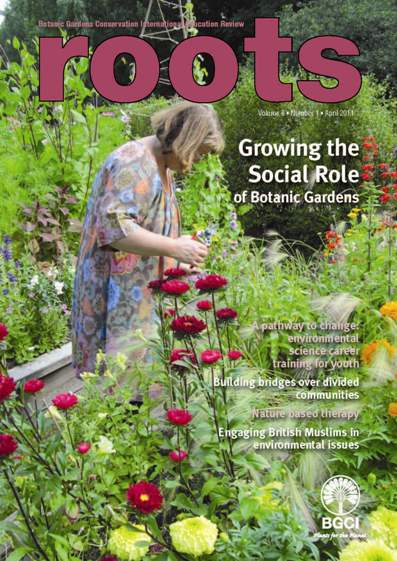 | Roots 8:1 - Growing the Social role of Botanic GardensThis issue follows a recent study commissioned by BGCI onRedefining the role of botanic gardens: towards a new socialpurpose. Roots 8:1 combines academic perspectives and cases from Ghana, Sweden, UK, Israel, and USA that demonstrate how botanic gardens can develop their social role. Examples include innovative social inclusion projects which may vary from mentoring students from disadvantaged backgrounds in natural science careers (Chicago Botanic Garden) to building bridges over divided Arab and Jewish communities (Jerusalem Botanical Gardens). |
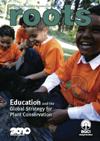 | Roots 7:2 - Education and the Global Strategy for Plant ConservationThis issue of Roots follows hard on the heels of BGCI’s 4th Global Botanic Gardens Congress ‘Addressing Global Change: a New Agenda for Botanic Gardens’, hosted so generously in Dublin in 2010 by the National Botanic Gardens of Ireland and supported by the Irish Government. Botanic gardens must be encouraged to take a lead on communicating and educating the public on all targets of the GSPC. |
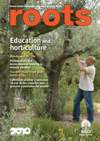 | Roots 7:1 - Education and |
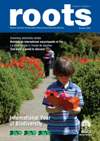 | Roots 6:2 - International Year |
 | Roots 6:1 - Interpretation |
Roots 5:2 - From there to eternity? The lesson's of Darwin's legacyWhen, in November 1859, Charles Darwin published On The Origin of Species, he triggered an intellectual and conceptual earthquake of such magnitude that its aftershocks remain with us a century and a half later. With 2009 marking the 200th anniversary of Darwin's birth and 150th anniversary of the publication of On The Origin of Species, this issue of Roots calls on botanic gardens to celebrate the legacy and thinking of this extraordinary man. | |
Roots 5:1 - Climate Change: Can we handle it?In this climate change issue of Roots, we examine how botanic gardens are confronting perhaps the greatest challenge ever faced by humankind. We show that many botanic gardens are taking the lead in their communities to engage the public in debate and empower them to take action. | |
Roots 4:2 - Making Waves for Water ConservationWhen we started to plan this water-themed issue of Roots, we were blissfully unaware that the summer of 2007 would emerge as the wettest since UK records began. Yet what happened here is nothing compared with what was going on elsewhere in the world. As the rains came down and rivers burst their banks throughout Africa, Latin America and Asia, millions of people were left homeless and without safe drinking water. Simultaneously, elsewhere in the world, millions of others faced serious drought conditions. The relationship between plants and water is intimate and complex; this issue of Roots explores this theme. | |
Roots 4:1 - Linneaus: Still relevant 300 years on?300 years ago Linnaeus, regarded as the father of taxonomy and creator of the classification system, had little difficulty in engaging young people’s interest in taxonomy. Students flocked from far and wide to study with him and contemporary accounts suggest that his natural history excursions were notorious events! Now however, many express concern over the apparently inexorable decline in the popularity of taxonomy. This issue of Roots explores the methods and solutions used by educators to bring taxonomy and classification to life. | |
Roots 3:2 - Environmental Education and playThis issue of Roots celebrates 'play' in the environment. With our world becoming more urbanised the need for access to green space has never been greater. Botanic gardens are wonderful venues for play and many gardens are increasingly aware of the need to offer opportunities for children to explore their surroundings freely. | |
Roots 3:1 – Access for all: Problems and SolutionsMost of us would subscribe to the view that botanic gardens ought to be accessible, and by that we generally mean open to the public. But such a simple and unchallengeable statement raises more questions than it seems to answer. For example, what exactly do we mean by access? Who gains access, to what and how? These are some of the issues raised in this edition of Roots. The resources from this issue compliment the access theme, and can also be downloaded here. |
I've included some distinctive material below here as it represents an alternative way of approaching Seeds and Plants... but not so unfamiliar to many who are connected to or have knowledge of the cultural, spiritual or religious teachings of their own or other's cultural heritages.
I thought I would share this as it might interest some readers and certainly reminds one of the importance of acknowledging the teachings that demonstrate how bio-cultural-diversity and bio-diversity are intimately informed and shaped by each other's presence.
Seeds of Unity Resources
Seeds of Unity Resources
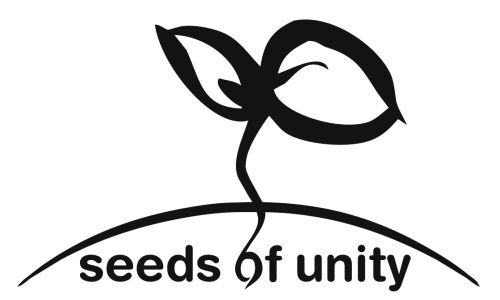
We have developed 18 new stimulating lesson plans for use in religious education. The plans are suitable also for cross-curricular work such as religion and biology or religion and citizenship/PSHEand include references to projects worldwide. We believe they can easily be adapted to other educational situations
The material is grouped into six thematic sections. In each section there are two school-based lesson plans and one botanic garden lesson plan. There is no set programme of study; rather teachers are free to construct their own delivery, e.g. spreading each set of activities over several lessons. Each lesson plan is accompanied by teaching resources and there is a suggested assessment activity for each, with differentiated outcomes. These are offered for the purposes of choice, as teachers wouldn’t be expected to complete an assessment for each lesson. We hope you enjoy using these resources and we welcome your feedback.
The Awesome Seed
Explore how seeds can be symbols of spiritual and creative potential
 | Classroom lesson AClassroom resources - 2-7 | Classroom lesson B | Botanic Garden lesson |
Food for Thought
Examine how food made from plants can be viewed in ordinary and sacred contexts and explore
the ethics of food choice and production
 | Classroom lesson AClassroom resources - 1-4 | Classroom lesson B | Botanic Garden lessonPDFs for: |
The Green Ark
Investigate ideas of stewardship and responsibility for the natural world
 | Classroom lesson A | Classroom lesson B2-4 | Botanic Garden lesson |
Cultivating Peace
Discover how gardens can reflect the concept of paradise, as well as help to foster
cooperation and inner tranquillity.
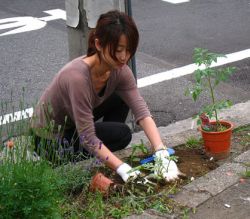 | Classroom lesson A | Classroom lesson B | Botanic Garden lesson |
Healing Body and Soul
Investigate how plants can be used medicinally, to heal our bodies, and therapeutically to restore our souls.
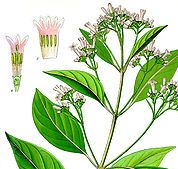 | Classroom lesson APDFs for resource 2: | Classroom lesson B | Botanic Garden lesson |
The Roots of Ritual
Explore how the human dependence on the plant world—in both literal and symbolic senses-
is reflected in ritual
 | Classroom lesson A | Classroom lesson B | Botanic Garden lesson |
BGCI would like to acknowledge the following people and organisations for their expertise and support in developing the Seeds of Unity resources:
- Nora Leonard, Standing Advisory Councils on Religious Education (SACRE) Consultant, Ealing Borough Council, London
- Lesley Prior, Lecturer in Religious Education, Roehampton University And London Diocesan Board For Schools
- Liz Wolverson, London Diocesan Board For Schools
- Zeshan Akhter, International Foundation for Ecology and Environmental Sciences
- Sri Ramesh Pattni, Hindu Forum of Britain
- Madhava Turumella, Hindu Forum of Britain
- Dr Satyanarayana Sastry, Hindu Forum of Britain
- Ruth Godfrey, Head of Education, University of Leicester Botanic Garden
- Botanic Gardens Education Network
NB If you decide to borrow any links please be sure to give full credit to the source of this material.
Sophie

